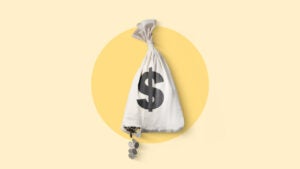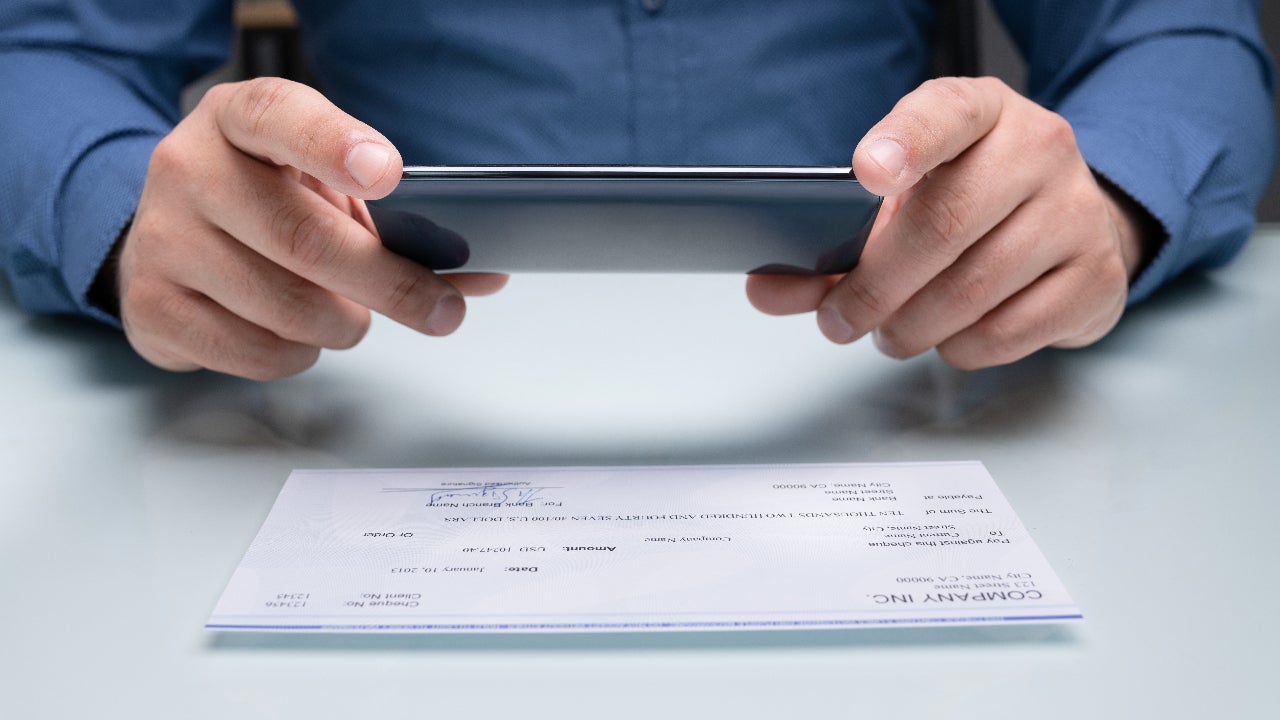15 pesky bank fees and how to avoid them

Key takeaways
- Very few bank accounts can be called 100-percent free due to a range of potential costs for certain types of activities and account behaviors.
- While some bank fees are relatively cheap – $3 to request a paper statement, for example – others, such as getting charged with three overdraft fees in one day, can be really costly.
- If you’re tired of seeing fees show up on your monthly statement, set aside time to start comparing alternative federally-insured banks and credit unions that have more consumer-friendly account terms.
Take a look at the fine print of any bank account, and you’re probably going to find a lot of potential costs. They’re everywhere, too – even checking and savings accounts labeled as “free” likely have some potential charges or penalties. If you aren’t keeping a close eye on your statements, those fees can start to add up over time.
Here are some common bank fees to watch out for:
1. Account maintenance fees
Some banks charge a maintenance – also commonly labeled as a monthly service – fee. What do you get for the fee? Nothing, really, other than the privilege of having the account.
What it could cost you: The average checking account maintenance fee on interest-bearing accounts is $15.45, while the average for noninterest accounts is $5.47, according to Bankrate’s 2024 Checking and ATM Survey.
How to avoid it: Banks that have these fees usually waive them if you maintain your balance above a specified amount, have a direct deposit set up or make a certain number of transactions with your debit card. Check the fine print and choose either a bank with no monthly fees or one with requirements to avoid the fees that you’re able to meet.
2. Out-of-network ATM fees
If you need cash but you use an ATM that isn’t part of your institution’s network, you can wind up paying a sizable chunk of money – one to your bank and one to the owner of the machine.
What it could cost you: The total cost of withdrawing money from an out-of-network ATM is $4.77 on average, an all-time high, according to Bankrate’s 2024 checking account and ATM fee survey. The average ATM surcharge came in at $3.19, and the average fee to use other banks’ ATMs was $1.58.
How to avoid it: Many banks have a large ATM network. It’s not just big banks, either. Some belong to large networks such as Allpoint and MoneyPass. And if you can’t find a free ATM, use your debit card to get cash back at a grocery store or other retailer.
3. Excessive transaction fees
Savings accounts and money market accounts are often limited to six withdrawals per month. This limitation exists because of a former federal regulation, Regulation D, which enforced banks to cap withdrawals from nontransaction accounts. The regulation has been removed, but most banks have kept the savings and money market account limitation in place.
What it could cost you: Excessive transaction fees can cost anywhere from $2 to $15 per transaction. In some cases, it could cost you the account, too. Some banks will close the savings or money market account and convert it to a checking account if you exceed the limit too often.
How to avoid it: Keep track of the number of times that you withdraw from your savings account in a month. Try to use your savings and money market accounts as infrequently as possible so that the funds are there for emergencies and specific goals.
4. Overdraft fees
When you spend more than you have in an account, this results in an overdraft, or a negative balance. An overdraft fee can be charged when the bank covers such a transaction that would otherwise overdraw your account.
What it could cost you: The average overdraft fee is $27.08, Bankrate’s 2024 checking and ATM fee survey found. Some banks will charge that fee up to three times each day, too. If you fail to spot the overdraft early, you can end up with a huge bill.
How to avoid it: Set account alerts that notify you if your checking account dips below a threshold – $50 or $100, for example – so that you avoid crossing into the red. Alternatively, find a bank that has eliminated its overdraft fees. Banks like Ally, Capital One and Citibank no longer charge them.
5. Sustained overdraft fees
Some banks may charge a sustained overdraft or extended overdraft fee if you have a negative balance for too long. In some cases, you might not have the money so it’s just adding to the problem.
What it could cost you: A lot. If you’re paying overdraft fees regularly, you’re losing a ton of money.
How to avoid it: Monitor your accounts, and set up alerts. Being aware of your balances and budgeting can help make sure you have cash on hand for these circumstances.
6. Overdraft protection fees
Overdraft protection allows you to link bank accounts so that if your account is overdrawn, funds from the linked account are automatically transferred to cover the charge. It’s a good way to avoid those $30 overdraft fees, but there’s a catch: It’s not always free.
What it could cost you: The fee varies by institution.
How to avoid it: Either opt out of the service, or find a bank that won’t charge you if you wind up using it. Just be mindful of meeting minimum balance requirements for the linked account.
7. Dormancy fees
A dormancy fee, also known as an inactivity fee, is charged when there’s no activity on an account for a certain period of time. After a specified amount of time that varies by state, banks must turn the funds over to the state. Dormancy fees are designed to limit this from happening by incentivizing customers to keep their accounts active.
What it could cost you: Not all banks charge dormancy fees. For those that do, the fee can range anywhere from $5 to $25, and the amount of time that must pass before the fee is charged is typically between a few months and a year.
How to avoid it: Don’t open more accounts than you’re able to keep track of. It can be useful to have multiple accounts — such as to keep separate savings funds in — but it’s important that they each serve a purpose and that you’re regularly transacting on each account.
“There is a cost to financial institutions of maintaining accounts, and especially so on accounts with small balances, so a dormancy or inactivity fee is often used as a prod to use the account or close it. Avoiding this fee can be as simple as an occasional transfer into or out of the account – such as the accumulated interest – or just taking the time to close out the account altogether.”
— Greg McBride, CFABankrate Chief Financial Analyst
8. Early withdrawal penalties on CDs
Certificates of deposit (CDs) typically charge an early withdrawal penalty if you close them, or take money out, before the specific term ends. Early withdrawal penalties are costly and can reduce your gains or even cut into your principal in some cases. Some banks don’t allow partial withdrawals, so that all-or-nothing mentality needs to be a part of your planning process.
What it could cost you: For short-term CDs – often less than 1 year – a penalty is often 90 days of interest. On a 5-year CD, expect a much stiffer penalty, as high as 540 days of interest.
How to avoid it: Determining when you’ll need your money before opting for a term is the best way to avoid early withdrawal penalties. If you’re worried that you may need access to the cash earlier, consider a high-yield-savings account or a no-penalty CD instead. You may earn less interest, but you won’t have to worry about forfeiting any interest.
9. Early closeout fees on accounts
CDs aren’t the only banking products that charge a fee if you close them too soon. At some banks, closing a checking or savings account too soon will cost you, too. Banks with this fee usually assess it if you close the account in the first 90 to 180 days.
What it could cost you: Early account closure fees typically run between $5 and $50.
How to avoid it: Research whether your account has one of these fees. Know that you’ll need to keep one of these accounts open for the required time to avoid the fee. Keep this, and the minimum balance, in mind before opening the account.
10. Insufficient funds fees
Also known as nonsufficient funds fees, these are charged when you don’t have enough money in a checking account to pay for a transaction. NSF fees differ from overdrafts in that you don’t end up with a negative balance — rather, the transaction is simply declined.
What it could cost you: NSF fees can be lofty — $17.72 on average, according to Bankrate’s 2024 checking account survey. Only 6 percent of banks don’t charge either an overdraft or NSF fee.
How to avoid this fee: The easiest way is simple: Find a bank that doesn’t charge them. If you want to stick with your bank, though, it’s important to regularly check your account balance, especially before making a large purchase. Consider setting up low balance alerts if you use a mobile banking app. It’s also important to remember any automatic payments that are made from your account and know when these are deducted.
11. Paper statements
Still want to get an envelope in your mailbox each month with your account details? It might cost you. As banks shift to an all-electronic communication approach, some are charging to send paper statements to account holders.
What it could cost you: It varies. PNC, for example, charges a $3 paper statement fee, but you can avoid it if you meet the conditions to get the monthly service fee waived.
How to avoid it: Get comfy with the computer. Sign up for paperless e-statements when you open your account or when you first login to your new account.
12. Transfer fees
Banks typically charge you for official bank checks and wire transfers. Sometimes a bank will even charge you for receiving funds via wire transfer.
What it could cost you: Past Bankrate research has shown the average amount for domestic outgoing wire transfer fees is around $26, while the average amount for outgoing international wires is $44. This can vary widely based on your account, though. Private bank clients with higher balances can often get wire transfer fees reduced.
How to avoid it: Plan ahead. Wire transfers are often used when you need to get money somewhere fast. Look for free options such as Zelle or sending a standard ACH transfer to move your money without paying anything for the service. You may be subject to smaller transfer amounts, though, which means breaking up the transaction into multiple amounts.
13. Returned item fees
If you write a check that bounces or have a direct deposit that is returned due to lack of available funds, your bank may charge you a returned item fee.
What it could cost you: This fee can range from $25 to $40 per item and can quickly add up if you have multiple returned items at once.
How to avoid it: Make sure to regularly check your account balance and have sufficient funds in the account before making payments to avoid this fee. Consider setting up banking alerts for low balances to keep track of your account balance.
14. Foreign transaction fees
If you travel overseas or make purchases from foreign sellers using a debit or credit card, you may be charged a foreign transaction fee.
What it could cost you: This fee is often 3 percent of the purchase amount and can be even higher for ATM withdrawals.
How to avoid it: To avoid foreign transaction fees, consider using a debit or credit card that doesn’t charge foreign transaction fees. Another option is to make sure you take out sufficient cash in advance to avoid making foreign ATM transactions — just remember that carrying too much cash can be risky, since it’s unlikely that you can get it back if it’s lost or stolen.
15. Account research fees
If you need to request copies of past statements or investigate a transaction, you may get charged an account research fee.
What it could cost you: This fee may be based on the number of paper statements you need and varies by bank.
How to avoid it: You can reduce the need for account research and incurring this fee by keeping digital copies of your statements and keeping track of your account to quickly detect any unusual transactions.
Bottom line
While you might be most concerned with monthly service fees and ATM charges, the banking industry’s list of fees is around a mile long. To navigate around those potential charges, read the fine print prior to opening a new account to make sure that your money lifestyle is a good match for the bank’s terms and conditions. If it’s not, look elsewhere. Bank fees don’t need to be part of your everyday routine.









